
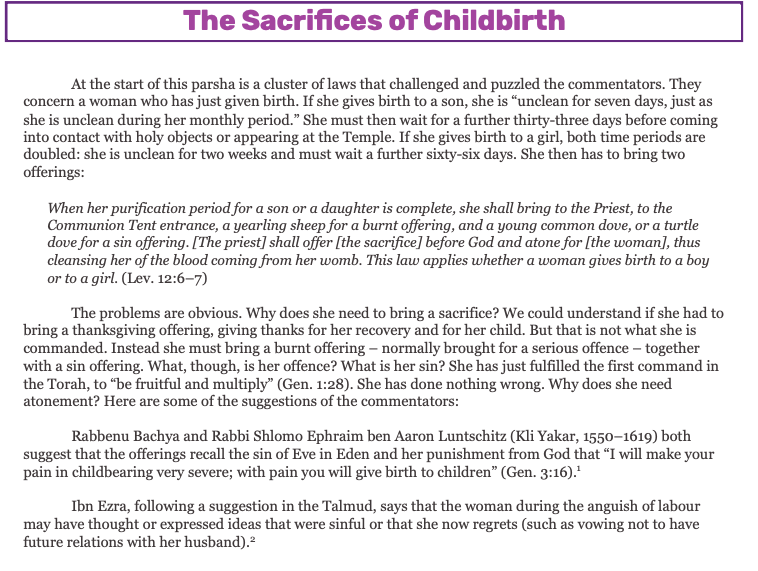
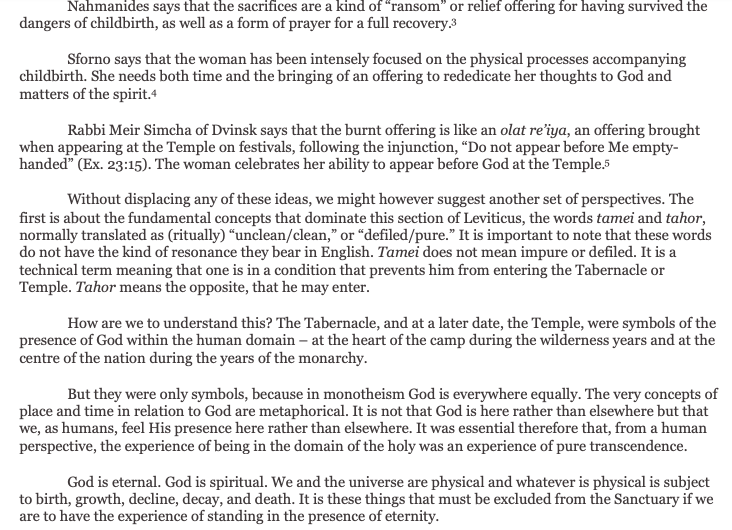
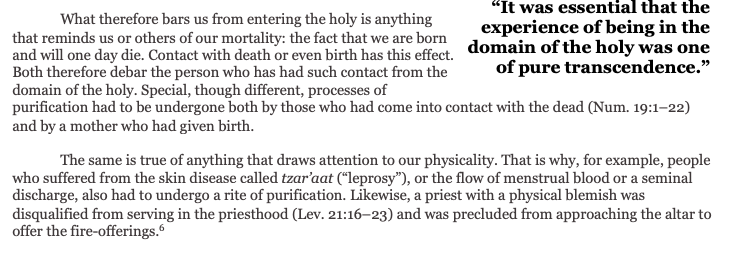
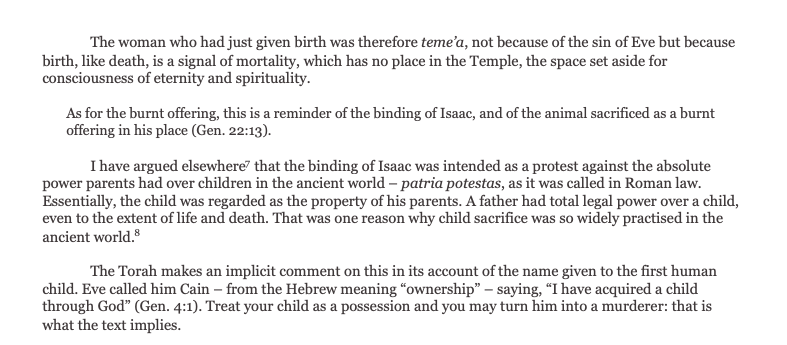
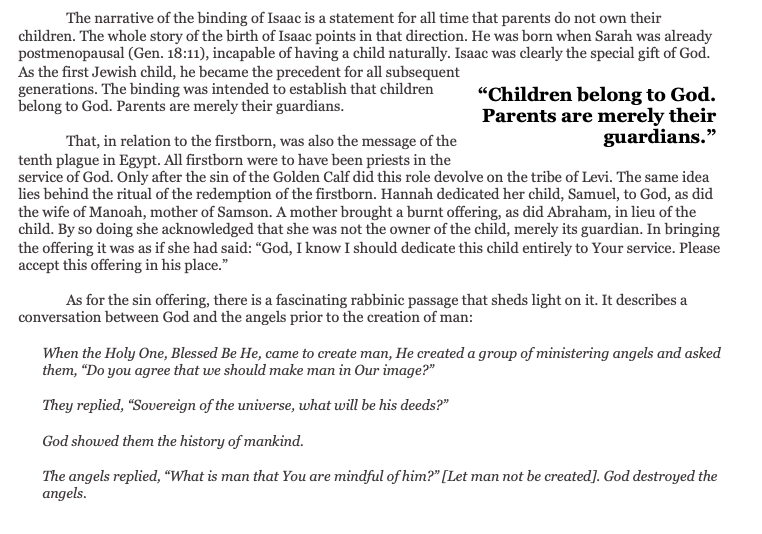
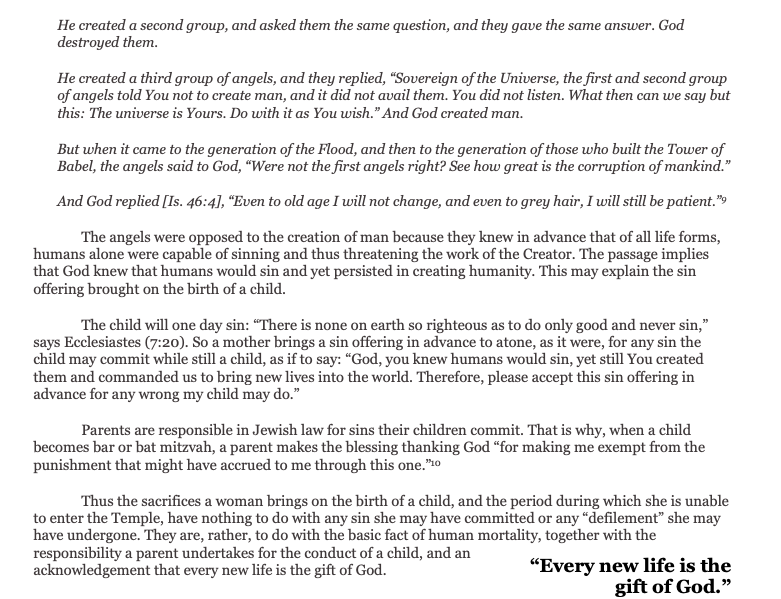
Shabbat Shalom,

[1] Rabbenu Bachya and Kli Yakar, Commentary to Leviticus 12:6.
[2] Niddah 31b; Ibn Ezra, Commentary to Leviticus 12:6.
[3] Nahmanides, Commentary to Leviticus 12:7.
[4] Sforno, Commentary to Leviticus 12:8.
[5] Meshech Chochmah, Commentary to Leviticus 12:6.
[6] Maimonides makes the interesting observation that the prohibition against a priest with a physical blemish serving in the Temple had nothing to do with holiness per se, but was due to popular perception: “For the multitude does not estimate man by his true form but by the perfection of his bodily limbs and the beauty of his garments, and the Temple was to be held in great reverence by all.” The Guide for the Perplexed, III:45.
[7] Jonathan Sacks, The Great Partnership: God, Science and the Search for Meaning (London: Hodder, 2011), 177–181.
[8] On child sacrifice, see Jon D. Levenson, The Death and Resurrection of the Beloved Son: The Transformation of Child Sacrifice in Judaism and Christianity (New Haven, Conn.: Yale University Press, 1995).
[9] Sanhedrin 38b.
[10] Genesis Rabbah 63:10.